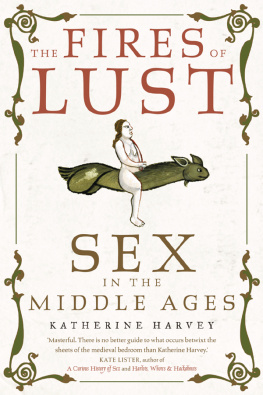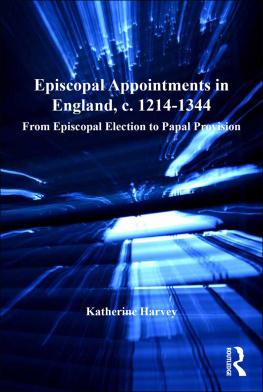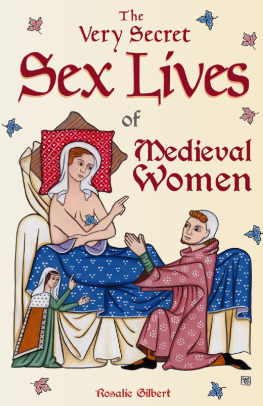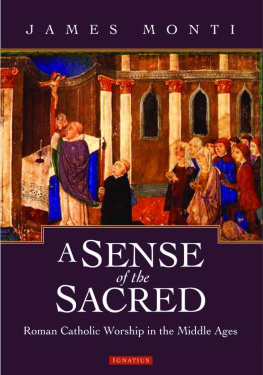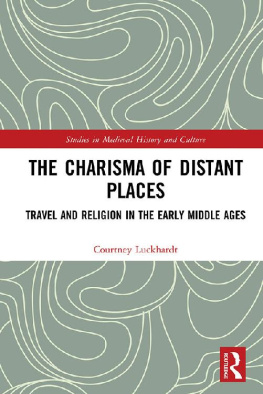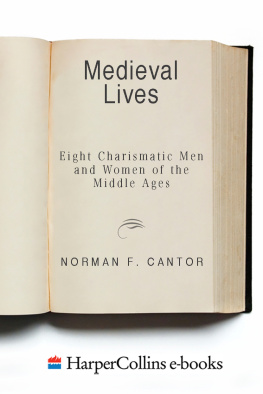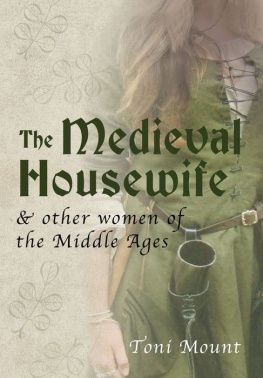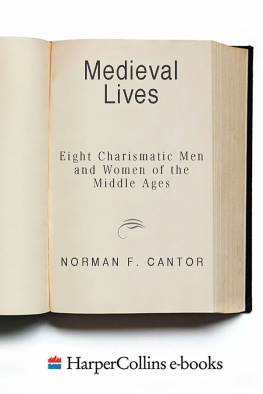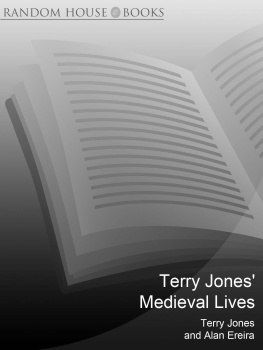THE FIRES OF LUST


Published by
REAKTION BOOKS LTD
Unit 32, Waterside
4448 Wharf Road
London N1 7UX, UK
www.reaktionbooks.co.uk
First published 2021
Copyright Katherine Harvey 2021
All rights reserved
No part of this publication may be reproduced, stored in a retrieval system, or transmitted, in any form or by any means, electronic, mechanical, photocopying, recording or otherwise, without the prior permission of the publishers
Page references in the Photo Acknowledgements and
Index match the printed edition of this book.
Printed and bound in Great Britain by TJ Books Ltd, Padstow, Cornwall
A catalogue record for this book is available from the British Library
eISBN 9781789144888
Contents
Introduction
O n 2 December 2015, in his speech opening a parliamentary debate on military action against the so-called Islamic State in Syria, the British Prime Minister David Cameron described the organizations members as woman-raping, Muslim-murdering, medieval monsters. This was not the first time he had identified Islamic States use of sexual violence as something that belonged to a specific era in the distant past: a year earlier, he had told the United Nations that the cruelty being meted out beheadings, eyes being gouged out, rape is horrific. It is literally medieval in character.
Camerons identification of repugnant sexual behaviour as somehow medieval was far from an original sentiment; rather, it sits within a long tradition of associating the Middle Ages with all the vices (also including superstition, torture and poor personal hygiene) that we like to think we have subsequently become too good for. His comments encapsulate the popular perception that medieval life was backwards and unthinkingly violent and that sex, rather than offering some respite from this unremitting bleakness, was usually violent, deviant or both. All of these stereotypes have been oft-represented and reinforced by the entertainment industry, and this prime-ministerial version of our medieval past has much in common with the world depicted in the HBO television series Game of Thrones.
While this immensely popular programme is technically a fantasy set in a fictional world, its creators have made much of its medieval inspiration and historical authenticity. When asked by The Atlantic about the sexual violence depicted in the series, George R. R. Martin (author of the novels on which it is based) responded, Well, Im not writing about contemporary sex its medieval. Such assertions have been used to justify the inclusion of countless sexual encounters and scenes involving numerous naked prostitutes, most of which add little or nothing to the plot or character development. This is a world in which sexual violence (including rape) is endemic, incest is unremarkable and homosexuality is unnatural.
Stereotypical representations of medieval sex are also characteristic of the romance genre, as demonstrated by Mills & Boons Medieval Lords and Ladies Collection of historical novels. In comparison to Game of Thrones, these are rather gentle stories, but they are equally insistent that this was a violent world (most of the heroes are warriors of some kind), in which women faced constant physical danger. While Mills & Boon has generally moved away from sexual violence in recent years, many of the encounters described in its medieval volumes are still very dependent on ideas of dominance and submission. Heroines are often reluctant to recognize their attraction to the hero, and only realize their true feelings when they helplessly succumb to a combination of persistent harassment and rough sex. Such behaviour is rendered palatable by the formulaic nature of the books the reader knows that there will be a happy ending, and that the heroine does love the hero really but also by the distancing effect of several centuries. Like Game of Thrones, these novels use the Middle Ages as a device that allows the modern cultural consumer to observe behaviours which would feel uncomfortable if presented in a contemporary scenario, but which can be unchallenging, enjoyable or even sexually gratifying if justified by the comfort blanket of history.
Popular belief in the strange and violent nature of medieval sexuality is further reinforced by the persistent myth that medieval lords were entitled (through a custom known as the droit du seigneur) to take the virginity of a bride on her wedding night.
Representations of this sort ridicule medieval attitudes and highlight the differences between the past and the present, but are underpinned by a belief that medieval people were just like us, because ultimately sex is a universal human impulse. Yet while there are some obvious continuities not least because the human body and its physical capabilities have changed very little over the past millennium there have been significant changes in how sex has been regarded, and therefore in how it is understood and experienced. For one thing, the medieval mind tended to see sex as something that one person did to another, rather than an activity in which both partners were equally engaged. There was a strong tendency to emphasize active (implicitly male) and passive (female) roles, and to assume that one of each was involved in each act of intercourse. While this did not necessarily mean that medieval women were expected to simply lie back and think of England, it was considered significant that men did the penetrating, and women were penetrated. This way of thinking held true even in discussions of same-sex acts, so that one man would be considered passive and the other active. Female-female acts were only really considered as sex if one woman used an object to penetrate the other.
If this view tended to prioritize penile-vaginal intercourse as the most significant perhaps the only real form of sex, the picture was further
Besides the ideological differences between medieval and modern views of sex, it is worth considering the differences in how people learn about sex. Today, by the time we reach the age of consent, most of us will have acquired considerable knowledge from formal sex education, but also via exposure to our sex-saturated mass media from, for example, news stories, advertising, sex scenes in films and on television, and perhaps even pornography. In contrast, most medieval people encountered only what could be gleaned from their local community, whether in the form of instruction from a parish priest, conversation with family and friends, or occasional glimpses of people or animals caught in the act.
Of course, there is a vast array of sexual attitudes and experience in the modern world, so that your perspective and mine might be very different, and the same was true in medieval Europe. This book focuses on western Europe, a sizeable area encompassing a range of peoples, cultures and attitudes, over a period of roughly four centuries, from circa 1100 to around 1500. Given such a geographical and chronological range, as well as the influence of individual circumstances, experiences and personalities, there would have been considerable variation in what people thought about sex and sexuality, and we should be cautious about trying to identify one single medieval view on any of the topics covered. Nevertheless, there were some extremely influential and widely shared ideas and attitudes in circulation, many of them rooted in two belief systems that were dominant throughout medieval Europe: Roman Catholic Christianity and Galenic medicine. It is with the influence of these complex ideologies on medieval sex and sexuality that we shall begin.

